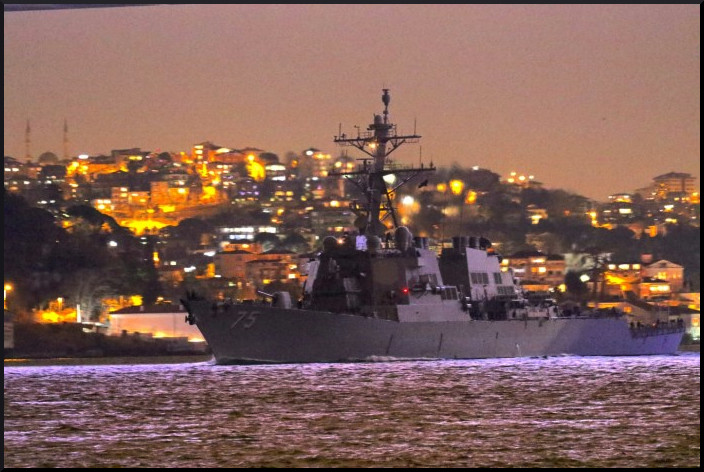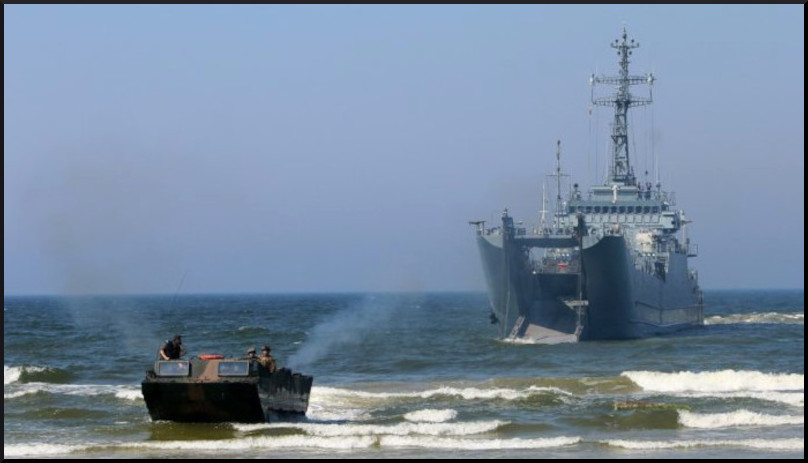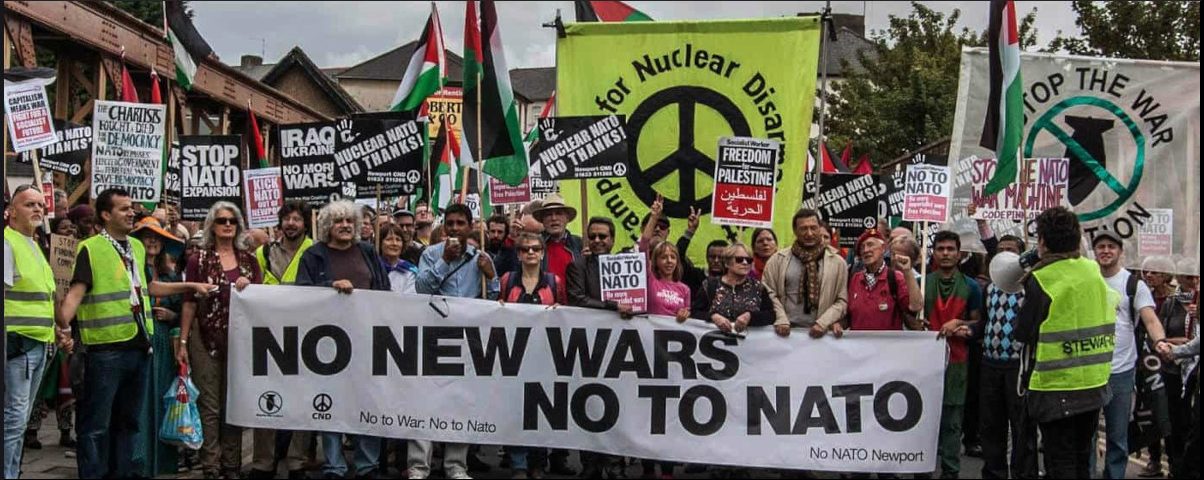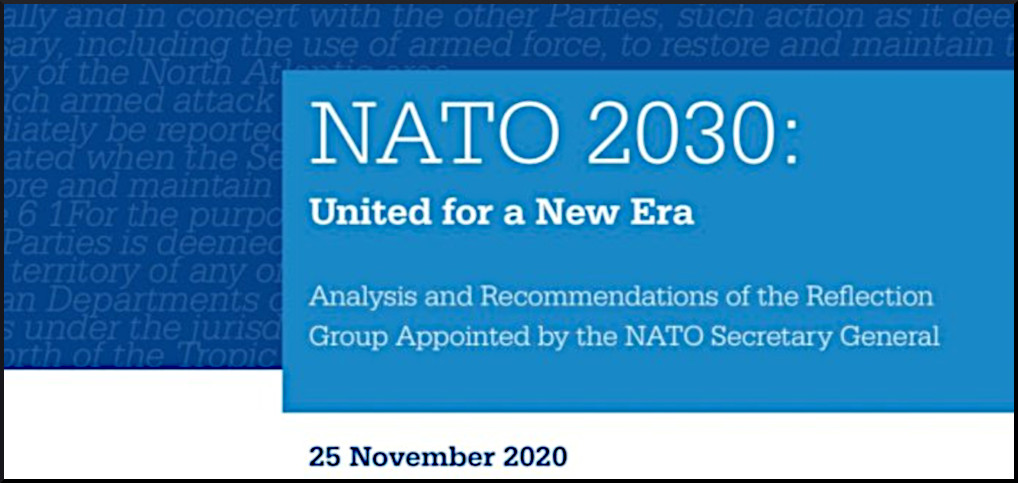by Jeremy Kuzmarov, published on Covert Action, June 17, 2021
From the moment he was elected to the U.S. Senate, Joe Biden was groomed for high office by his mentor, Averell Harriman, a fabulously wealthy investment banker, governor of New York, coordinator of the Marshall Plan, and one of the original U.S. representatives to the North Atlantic Treaty Organization (NATO) after its formation in 1949.
Harriman died in 1986 but would have been proud of his protégé on Monday, June 14th, when Biden gave a public briefing at the annual NATO summit in Brussels in which he affirmed the U.S. commitment to the NATO alliance and Article 5 of its charter as a “sacred obligation.”
Article 5 states that an attack on one member is an attack on all members.
Biden also lauded a NATO blueprint promoting greater military spending to contain the alleged threats from China and Russia—which Biden following Harriman has long played up.
During the 2020 election, Biden received $236,614 from General Dynamics, which conveniently received a $140 million, five-year contract in 2017 and $695 million contract in 2020 to upgrade NATO’s Information Technology (IT) and cyber-security infrastructure and that of the U.S. army in Europe.
Biden further received $447,277 from Lockheed Martin, which manufactures the F-16 Fighting Falcon jet, a NATO favorite, which last year began air patrols for NATO over Bulgaria and other Eastern European countries.
The above totals show who is driving Biden’s support for NATO’s latest military buildup, which includes the expansion of space-based weapons and military exercises, airborne surveillance systems, and a growing forward presence in the Baltic states and Poland.
Warped Spending Priorities
NATO was established as a military alliance between Western European countries and the United States and Canada to contain alleged Soviet aggression.
Since the end of the Cold War, it has added 16 new member-nations and expanded to Russia’s border—despite a promise by U.S. Secretary of State James Baker to Mikhail Gorbachev that it would not do so.
A Brussels Summit Communiqué claimed that NATO was the “most successful Alliance in history,” whose importance today resulted from “multiple threats” to Western democracies from “assertive and authoritarian powers,” notably China and Russia, whose “aggressive actions constitute a threat to Euro-Atlantic security.”
The Communiqué warned further about new “cyber, hybrid and other asymmetric threats, including disinformation campaigns, and by the malicious use of ever-more sophisticated emerging and disruptive technologies.”
This is seen as justification for a renewed commitment to the two percent GDP metric agreed upon in 2014 in which NATO member-states contribute two percent of their budget toward NATO—a total that will be increased after 2024.
Donald Trump had generated great publicity during his presidency demanding that NATO members adhere to the two percent provision, though Biden adopted the same position, bragging on Monday that ten countries had met the two percent goal [the number is actually twelve] and that the others were “on the way.”
Despite the pandemic, 2020 witnessed a 13.6% increase in worldwide military spending. NATO states spent $1.062 trillion on the military, approximately 56% of the global total.
Quique Sánchez, a Barcelonan peace activist noted at “Stop NATO 2021,” a webinar sponsored by the Left in the European Parliament, that if even a fraction of this military spending were cut, the entire world could be given COVID vaccines, and the public health crisis would recede.
Education and health care would also be adequately funded and proper action taken to combat climate change.
At an April 2019 anti-NATO protest in Washington, D.C., folk singers Ben Grosscup and Luci Murphy performed the song “NATO’s Got to Go,” which characterized NATO as a “political scheme to sell the whole world with the flu.”
The song went on: “From Kosovo to Afghanistan to African shores, the bureaucrats of NATO just keep making war.”
NATO indeed has spearheaded illegal military interventions, such as in Libya where the removal of secular pan-Africanist Muammar Qaddafi resulted in a decade of civil war, empowered Islamic fundamentalists, and led to the reintroduction of slavery.
Afghanistan under NATO occupation has also evolved into a failed state led by a violent kleptocratic elite which covertly supports the very enemy it purports to be combating. Hamid Karzai, Afghanistan’s President from 2004-2014, said that “the U.S.-NATO military campaign was not against extremism or terrorism, the campaign was more against Afghan villages and hopes; putting Afghan people in prison in our own country, and bombing all villages. That was very wrong.”
NATO 2030 Agenda
A key priority at the Brussels NATO summit was to promote the new report, NATO 2030: United for a New Era, which aims to repurpose NATO as a bulwark against supposed Chinese and Russian aggression in the new Cold War.
The report was written by a group of ten experts assembled by NATO Secretary General Jens Stoltenberg. They include Dr. A. Wess Mitchell, the U.S. Assistant Secretary of State for Europe and Eurasian Affairs from 2017 to 2019, who was among the earliest proponents of placing NATO personnel in Poland and the Baltic States in the aftermath of the 2008 Russo-Georgian War, and pushed for expanded U.S. military aid to Georgia and Ukraine.[1]
Predictably, NATO 2030 uses hostile language demonizing China and Russia, with recommendations that will lead to growing confrontation.
Some of those recommendations are illegal—the report, for example, advocates sustaining the nuclear arms race, despite the UN having outlawed nuclear weapons.
The extreme measures advocated in the report are justified under the claim that NATO has “responded with resolve to the threat posed by Russian aggression in the Euro-Atlantic region,” and that this threat has to be deterred.
Russia, however, was never an aggressor in the Euro-Atlantic region.
It responded in 2014 to a Western-backed coup in Ukraine by re-annexing Crimea—which historically belonged to Russia and which its population voted on—and by supporting a rebellion in Ukraine’s two eastern provinces, which the population there broadly supported.
Russia’s evil is epitomized according to NATO 2030 by its “use of chemical weapons, poisoning and state-sanctioned assassination”; however, none of these accusations has been substantiated.
NATO 2030 further condemns Russia for its allegedly “assertive behavior” in the Baltic states and Black Sea—when Russian military maneuvers have been largely developed in response to U.S.-NATO provocations.

The press release continued:
“Taking off from Norway, two US Air Force B-1 bombers trained with fighter aircraft from Poland, Italy and Germany [flew] over the Baltic Sea and flew over the capitals of Estonia, Latvia and Lithuania. In a separate event, two French Rafale fighter jets from the aircraft carrier Charles De Gaulle and two Spanish F-18 aircraft on NATO duty in Romania took part in drills involving NATO warships in the Black Sea.”
If Russia had performed the same kind of exercises in the Gulf of Mexico, flown aircraft over Ottawa, and brought together allies in a hostile alliance, then Americans too would try to fortify the country’s defenses—or do something far more drastic if history is any guide.
But Russia is apparently not entitled to self-defense in the American-dominated world order, which NATO helps entrench.
Besides Russia, NATO 2030 notes with alarm the “growing power and assertiveness of China,” which has supposedly engaged in “intimidatory diplomacy well beyond the Indo-Pacific region” and “proved its willingness to use force against its neighbors.”
China, however, has won substantial support with its One Belt-One Road and other infrastructural development programs, and has not invaded anyone since the Sino-Vietnamese War of 1979—while the U.S. has invaded dozens of countries in that time.
Although NATO 2030 repeatedly accuses Russia and China of promoting disinformation, it is NATO which is advancing disinformation along with biased analyses that are designed to secure yet higher levels of military spending.
The report’s concern for climate change and the environment also rings hollow; military aircraft are major sources of carbon emissions and military weapons a huge cause of pollution.
Not a Kumbaya Moment—The Biden-Putin Summit
On Wednesday, June 16th, Biden traveled to Geneva and met with Russian President Vladimir Putin in an 18th century villa in a much-awaited summit.

The Biden-Putin meeting lacked the same circus environment as in 2018 when Donald Trump was accused in the media and by Democratic Party politicians of being a traitor for meeting with Putin and hatching certain agreements and plans.
The latest meeting, however, does not herald a new détente: Biden said that “This is not a kumbaya moment,” referring to the feel-good song popular in the 1960s. “This is not about trust. This is about self-interest, and verification of self-interest.”
Failing to share a meal or take a walk with Putin, Biden refused to reconsider key U.S. policies that have resulted in the new Cold War. These include: a) the U.S. sanctions policy on Russia—which has harmed Russia and has been based on fraudulent pretexts; b) The U.S.’s pulling out of the Open Skies, Anti-Ballistic Missile (ABM) and Intermediate Nuclear Range Forces (INF) treaties; and c) NATO expansion.
Biden continued to antagonize Russia further by a) rebuking its human rights record and treatment of opposition leader Alexei Navalny; and b) affirming the United States’s “unwavering commitment to the sovereignty and territorial integrity of Ukraine.”
The latter statement insinuates that Russia violated Ukraine’s territorial integrity when in fact the U.S. was the one to violate it by providing $5 billion over a decade in support of color revolutions and regime-change efforts that culminated in the 2014 coup d’états against Russian-backed leader Viktor Yanukovych.
This coup triggered Ukraine’s civil war that drew in the Russians—in defense of two eastern provinces, Luhansk and Donetsk, whose people voted to secede after the post-coup Ukrainian government tried to impose the Ukrainian language on them.
During his press conference, Putin responded to Biden’s moralistic proclamations about human rights by pointing to secret prisons run by the CIA where torture was carried out and drone attacks against civilians, and complained about the “bloody coup” in Ukraine in 2014, which the U.S. had instigated.
Putin also said that the U.S. supported opposition groups in Russia to “weaken the country” since it “sees Russia as ‘an adversary'” and that Russia was not behind any cyber-attacks.
Putin further defended his government’s treatment of Alexei Navalny, stating that Navalny wanted to be arrested because he decided to return to Russia when there was a warrant out for him.
Additionally, Putin compared the arrest of protesters in Russia to the arrest of Black Lives Matter protesters and Trump supporters “expressing political demands” who stormed the U.S. Capitol on June 6th; comparisons which Biden said were “ridiculous.”
In the latter case, rioters were [ie. Ashli Babbit] “shot on the spot, even if unarmed,” Putin said, marking the U.S. response as worse than anything Russia had done.
Ironically, while both Putin and Biden were speaking, a major maritime exercise was being carried out in the Baltic Sea involving 16 NATO countries, 60 aircraft and 4,000 military personnel.

The New York Times reported the same day that China and Russia had joined forces to challenge the U.S. in space, ushering in a new era of space competition that could match or eclipse the era of the first Cold War.
U.S. imperial drives have generally created a dangerous world environment—which Biden’s foreign policy has so far helped exacerbate. Russia and China’s alliance should prove more durable than the one established in the 1940s and 1950s—and more damaging to Washington’s global designs that appear more and more unsustainable.
- Mitchell had criticized Barack Obama’s efforts in his first term to ameliorate U.S.-Russia relations and has been a strong proponent of stepping up efforts to counter Russia and China. ↑
Jeremy Kuzmarov is Managing Editor of CovertAction Magazine and author of four books on U.S. foreign policy, including Obama’s Unending Wars (Clarity Press, 2019) and The Russians Are Coming, Again, with John Marciano (Monthly Review Press, 2018).
He can be reached at: jkuzmarov2@gmail.com.

